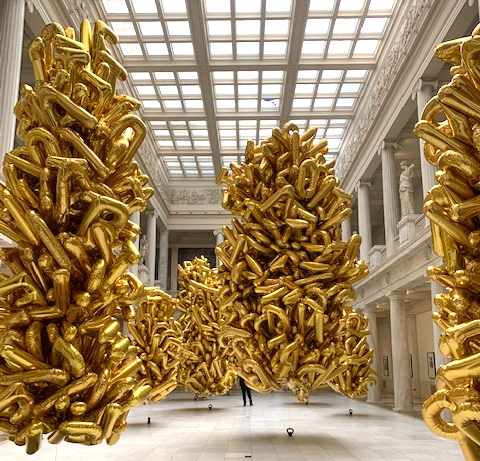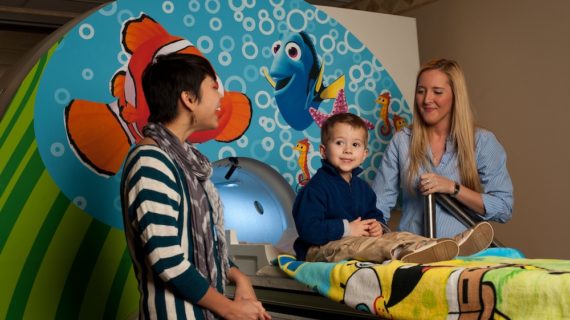
Your kid-friendly guide to the Carnegie International, now open at CMOA
Photo above courtesy of KDKA.
The “Carnegie International” at the Carnegie Museum of Art is the oldest recurring art exhibit in the U.S. It’s now open, featuring works by local, national and international artists. It may seem intimidating to bring kids, but there’s actually so much for kids to see.
We’ve asked the museum’s director of education to share five pieces to start a conversation with your kids:
1: Balloons! The Carnegie Museum is filled with new art everywhere, but when kids see the balloons, they’ll be hooked.
An artist from Istanbul, Turkey, created each balloon bouquet to represent a human right, like freedom and equality. Dana Bishop-Root, director of education for the Carnegie Museum of Art, said, “The artist is really asking, ‘What happens when we aren’t working together to hold up our human rights?’ And so the balloons become that metaphor, and over time and over the course of the exhibit, they will slowly start to deflate as the helium goes.”
Ask your children: What rights do you have? Who doesn’t have rights? Then begin a conversation about what happens when people don’t support those rights.
2: From balloons to envelopes, kids will see that art can be made with all kinds of materials.
Artist Ali Eyal uses plain manila envelopes for drawing memories of his home in Iraq, which he had to leave. Ask your child: What kinds of objects and plants make you think of home? How could you collect those memories?
Many of these drawings are on a child’s eye level, giving you a good opportunity to teach them why visitors can’t touch the art. Bishop-Root suggests, “It’s not just ‘Don’t touch the artwork.’ It’s ‘Help us preserve this artwork for other visitors, for other families so they, too, can enjoy the artwork.’”
3: Kids will love trying to figure out where the sounds are coming from when they walk inside a room filled with sound.
You could tell your child: Shut your eyes. How do you see this?’ An artist named Togar, from Amsterdam, recorded sounds of the sea and mixed them with automated ocean drums, shruti boxes, gongs and other sounds to create this piece.
“Togar invites us to move in this space, to relax in this space,” Bishop-Root said. “Again, I think sometimes we get kind of stuck in how we’re supposed to look at art, but this is a really wonderful invitation that if you want to move your body, if you want to take a deep breath.”
Kids and adults may really enjoy taking in the sound of the landscape that the artist has created.
4: Don’t miss a piece by artist Gateja called “Soils of Life.”
Gateja creates paintings and sculptures using handmade beads attached to a barkcloth surface. Each bead is made from recycled materials — things like retired school textbooks and flyers. Ask your child to look closer at the paintings and sculpture to see what they are made of.
Ask your child: Like this painting made of lots of small beads, how can lots of people come together to create something bigger?
5: This piece involves some exploring: Take your child to the Hill District (2317 Centre Avenue, Pittsburgh, 15210) not far from the museum, to see artist James “Yaya” Hough’s mural titled, “A Gift to the Hill District.”
This mural was created with the help of community members at workshops. On the mural, you will see a quote by Pittsburgh native, playwright August Wilson: “Have a belief in yourself that is bigger than anyone’s disbelief.”
Ask your young ones: What does it take for you to believe in yourself? How are you affirmed?
Click here for all the details on the many programs for kids, families and well as adults. And check out Kristine’s report on video here.





